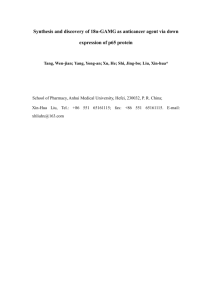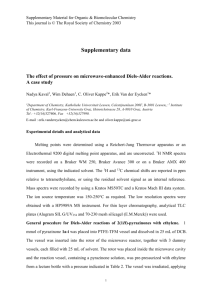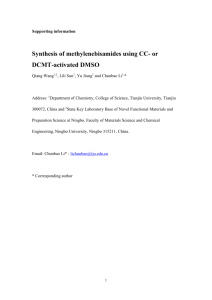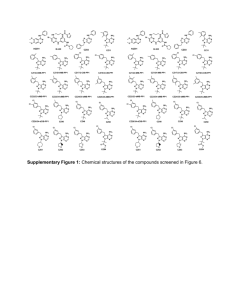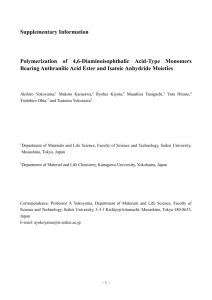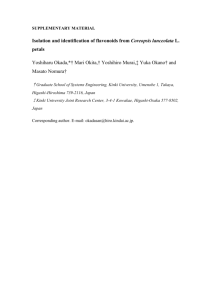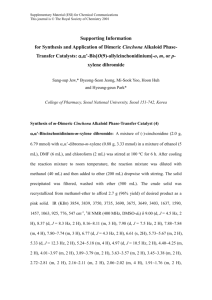Supporting Information
advertisement
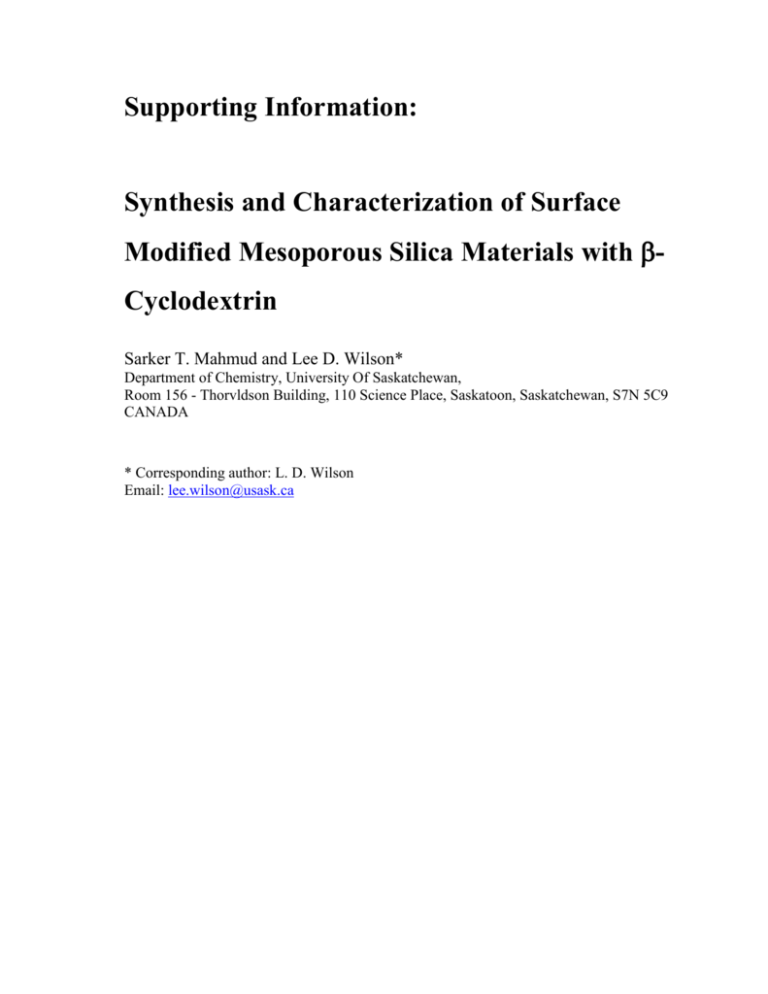
Supporting Information: Synthesis and Characterization of Surface Modified Mesoporous Silica Materials with Cyclodextrin Sarker T. Mahmud and Lee D. Wilson* Department of Chemistry, University Of Saskatchewan, Room 156 - Thorvldson Building, 110 Science Place, Saskatoon, Saskatchewan, S7N 5C9 CANADA * Corresponding author: L. D. Wilson Email: lee.wilson@usask.ca Figure S1: 1H NMR spectrum of β-CD in DMSO-d6 obtained at 295 K and 500 MHz. (The numbering of 13C nuclei of glucose unit in the β-CD macrocycle has been shown by the molecular structure of β-CD, see inset). Figure S2: 1H NMR spectrum of 3-isocyanatopropyltriethoxysilane (ICL) in DMSO-d6 obtained at 295 K and 500 MHz, where * denotes the signal for DMSO-d6. Figure S3: 1H NMR spectrum of CD ICL in DMSO-d6 obtained at 295 K and 500 MHz. The following assignment is given for the 1H NMR results in Fig. 3: δ 0.50 (m, 8H, SiCH2), 1.15 (t, 36H, SiOCH2CH3), 1.40 (m, 8H, SiCH2CH2), 2.72 (s, 4H, N-H), 2.93 (m, 8H, SiCH2 CH2CH2), 3.29-3.34 (m, 14H, H-4 and H-2), 3.55 (m, 7H, H-5), 3.60-3.70 (m, 14H, H-3 and H-6 a, b), 3.75 (q, 24H, SiOCH2CH3), 4.48 (m, 5H, OH-6), 4.82 (s, 7H, H-1), 5.70 (s, 5H, OH-3), 5.75 (m, 7H, OH-2). Figure S4: Nitrogen adsorption-desorption isotherm of a) CD-ICS 2(14) b) CD-ICS 4(14) and c) CD-ICS 6(14) at 77 K. Figure S5: Nitrogen adsorption-desorption isotherm of a) CD ICS 2(16), b) CD ICS 4(16) and c) CD ICS 6(16) at 77 K.

